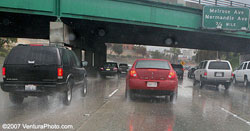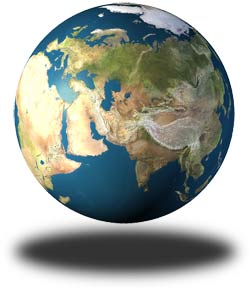 My husband Dave always seems to be ahead of the cool gadget curve,
making sure we're the first kids on our block to have the latest and
greatest tech toys. We've had our Wii for years, stood in line the
first week for the iPhone (him not me), sold our regular laptop to
upgrade to the MacBook Air (worth every penny) and are still jamming
away a year later on Rock Band when most people have never even played
the game. I couldn't imagine what he was going to pull out of his
Christmas stocking this year. Thanks to the generosity of his boss, it
was a Kindle. For those of you who shop on Amazon – which would be almost everyone
with an Internet connection on the planet – the Kindle is not exactly
new, but it sure is hard to get your hands on, which is a bit of a
surprise considering how expensive it is.
My husband Dave always seems to be ahead of the cool gadget curve,
making sure we're the first kids on our block to have the latest and
greatest tech toys. We've had our Wii for years, stood in line the
first week for the iPhone (him not me), sold our regular laptop to
upgrade to the MacBook Air (worth every penny) and are still jamming
away a year later on Rock Band when most people have never even played
the game. I couldn't imagine what he was going to pull out of his
Christmas stocking this year. Thanks to the generosity of his boss, it
was a Kindle. For those of you who shop on Amazon – which would be almost everyone
with an Internet connection on the planet – the Kindle is not exactly
new, but it sure is hard to get your hands on, which is a bit of a
surprise considering how expensive it is.
I certainly wasn't going to pay $359 for this "toy." As an avid book reader who buys 30-40 books a year, I'd make my money back pretty quickly, considering the regular cost of new books. Of course, to actually read anything on it, you have to pay more, around $8-10 per download, which is about half the price of most hardcovers and over time seems like a good deal. Ultimately, my decision to not jump on this bandwagon was all about the experience. Sure, the "books" are cheaper and kept all in one place (you can switch from book to book at the click of a button and the device even keeps your place for you, which is nice), but what about the physicality of watching the story unfold as you turn the page? Of the feel of the paper beneath your fingertips? Of getting the latest book by your favorite author right off the press?


 Here are four things you can do to reduce your carbon footprint in 2008.
Here are four things you can do to reduce your carbon footprint in 2008. Checks and balances. Have you ever thought about how amazing those
two words are? In the simplest sense, writing checks and figuring out
how much money you have left after you’ve written them. In the larger
sense, if something is depleted or out of whack, something comes along
to reestablish order.
Checks and balances. Have you ever thought about how amazing those
two words are? In the simplest sense, writing checks and figuring out
how much money you have left after you’ve written them. In the larger
sense, if something is depleted or out of whack, something comes along
to reestablish order. FOOD HUGGERS
FOOD HUGGERS Who said laundry can’t be fun? LooHoo Wool Dryer Balls are colorful, reusable dryer balls that reduce drying time (by 25 percent) and soften laundry naturally! LooHoos lift and separate clothes creating a constant motion that allows more air to circulate around your wet laundry so it dries faster. Made of lanolin-rich wool, about the size of a baseball, these dryer balls can be used for years and the hues will never transfer onto your clothes. The wool fibers absorb static cling, and an added bonus, wool absorbs odors too… so no more stinky socks!
Who said laundry can’t be fun? LooHoo Wool Dryer Balls are colorful, reusable dryer balls that reduce drying time (by 25 percent) and soften laundry naturally! LooHoos lift and separate clothes creating a constant motion that allows more air to circulate around your wet laundry so it dries faster. Made of lanolin-rich wool, about the size of a baseball, these dryer balls can be used for years and the hues will never transfer onto your clothes. The wool fibers absorb static cling, and an added bonus, wool absorbs odors too… so no more stinky socks!